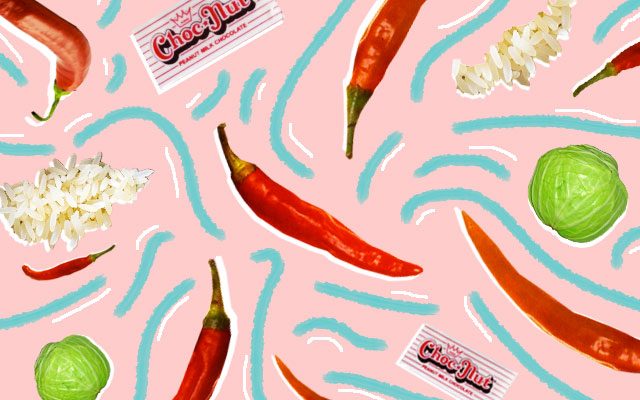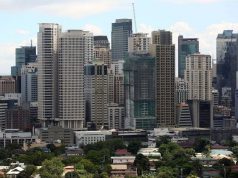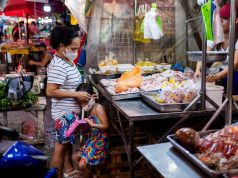
Consumers in the Philippines are circulating pictures and stories of the outrageously high prices of various products after the inflation rate surged to 6.4 percent in August 2018.
Pictures showing various food items sold at high prices days after the Philippine Statistics Authority announced the highest inflation in spike in nine years.
Among these were pictures of a roll of cabbage priced at P177.50, a pack of Taiwan chili at over P1,000 and a pack of string beans at P311.
Joke ba 'to??? It's more fun in the Philippines nga. #inflation pic.twitter.com/mE4cLfZITb
— C ?? ♑ (@czzzzzzzzzarina) September 8, 2018
SM Markets, the proprietor of the grocery where the exorbitantly priced pepper was allegedly found, denounced the picture as false and claimed that the picture had been manipulated in a statement.
Others are concerned with the rising cost of what used to be the cheapest of snacks, such as the Philippines’ favorite chocnut, which is now sold at P5 a piece at some stores.
The famous snack could be purchased for as low as P1 per piece at corner stores and sidewalk kiosks a few years ago.
Wait…chocnut is P5 each now?! WTF https://t.co/W8IcMSwAQY
— kho (@Peachuki) September 9, 2018
Others have shared stories of the difficulties people faced in search of alternatives to basic goods which have become too expensive for ordinary Filipinos to purchase from the market.
Nung napadaan ako sa NFA Legazpi sobrang haba ng pila for the Php 27 per kilo ng bigas, iniinda nila ang init ng araw para may pangtawid gutom. Di na nila afford yung bigas sa market sa sobrang mahal. One thing struck me that this is the reflection of their incompetence.
— Disney (@sidzky_22) September 9, 2018
The NFA has been distributing its stored rice after rice retail prices surged to an all-time high in recent months. The agency has also announced the importation of additional rice sacks to address the shortage.
A message found at a popular fastfood chain from a customer who decided to leave his complimentary siling labuyo untouched made rounds on discussion board RedditPH.
According to the anonymous good samaritan, he decided to give away his sili to those who wanted it more as it could cost as much as P600 a kilogram.
Siling labuyo, the country’s most sought after chili pepper, costs P129.50 per 100 grams at a popular grocery chain. A kilogram would thus cost P1,295 based on the grocery’s prices.
Public utility vehicle drivers and car owners alike have also decried rising fuel prices in recent months, with the price of gas breaching the P50 mark.
Take me back sa panahong 43 lang ang presyo ng gas
— zaсн (@zac3ya) September 7, 2018
Transport groups have also called for the minimum jeepney fare to be raised to P12 after another series of price hikes, barely two months after the minimum fare was raised to P9 in July 2018.
Oil companies in the Philippines announced on Monday that the price of gasoline, diesel and kerosene would be raised by P0.65 per liter.
Measures being taken
Rising oil prices around the world and damage to the agricultural sector due to destructive weather conditions during the rainy season are believed to be among the factors that caused the sudden upsurge in prices.
President Rodrigo Duterte meanwhile blamed his US counterpart Donald Trump for contributing to worldwide inflation by imposing tariffs on several Chinese goods.
The country’s economic managers have announced measures to curb the country’s inflation problem.









